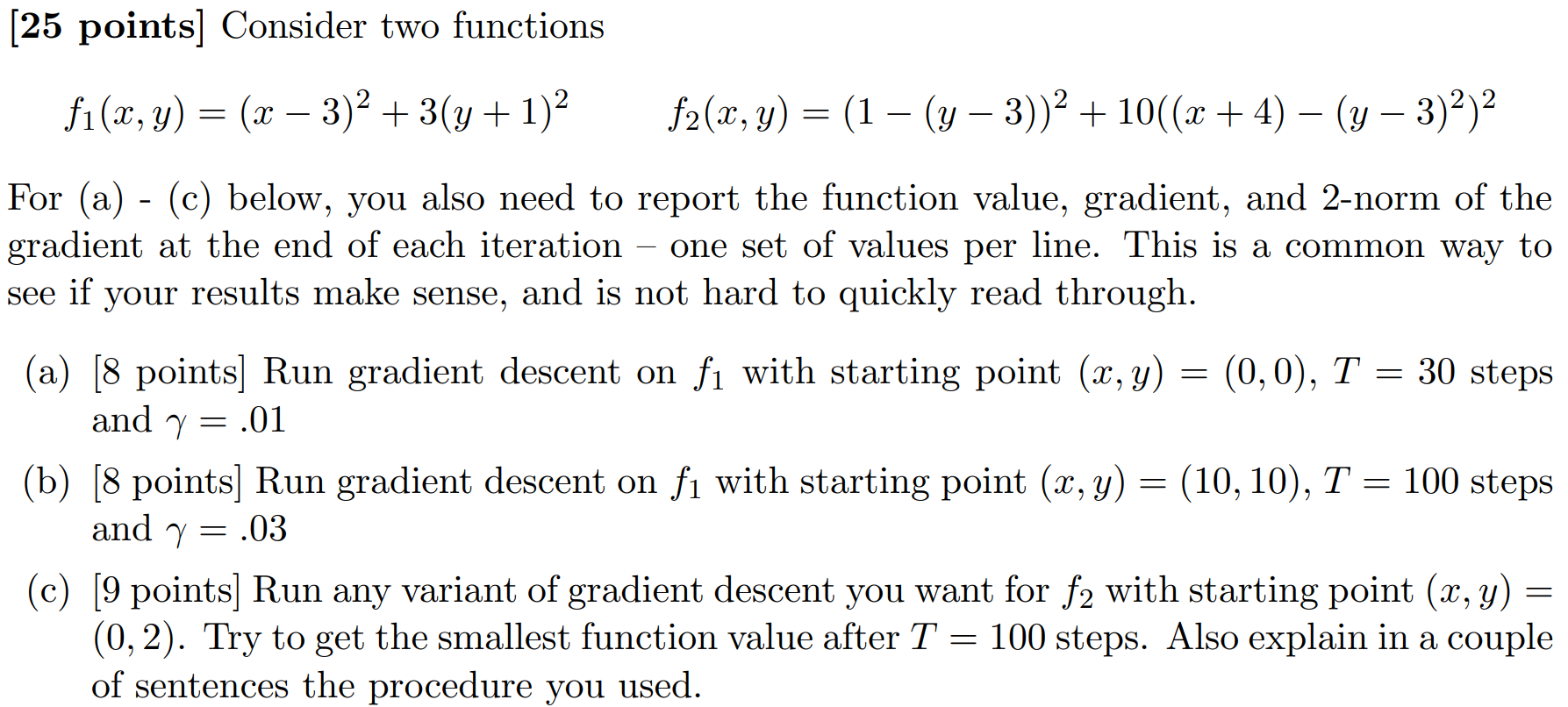Answered step by step
Verified Expert Solution
Question
1 Approved Answer
[25 points] Consider two functions f1(x, y) = (x 3) + 3(y + 1) 2(x, y) = (1 (y 3)) + 10((x + 4)

[25 points] Consider two functions f1(x, y) = (x 3) + 3(y + 1) 2(x, y) = (1 (y 3)) + 10((x + 4) (y 3)) - For (a) - (c) below, you also need to report the function value, gradient, and 2-norm of the gradient at the end of each iteration one set of values per line. This is a common way to see if your results make sense, and is not hard to quickly read through. (a) [8 points] Run gradient descent on f with starting point (x, y) = (0, 0), T = 30 steps and Y = = .01 (b) [8 points] Run gradient descent on fi with starting point (x, y) = (10, 10), T = 100 steps and Y = .03 = (c) [9 points] Run any variant of gradient descent you want for f2 with starting point (x, y) (0, 2). Try to get the smallest function value after T = 100 steps. Also explain in a couple of sentences the procedure you used.
Step by Step Solution
There are 3 Steps involved in it
Step: 1

Get Instant Access to Expert-Tailored Solutions
See step-by-step solutions with expert insights and AI powered tools for academic success
Step: 2

Step: 3

Ace Your Homework with AI
Get the answers you need in no time with our AI-driven, step-by-step assistance
Get Started


